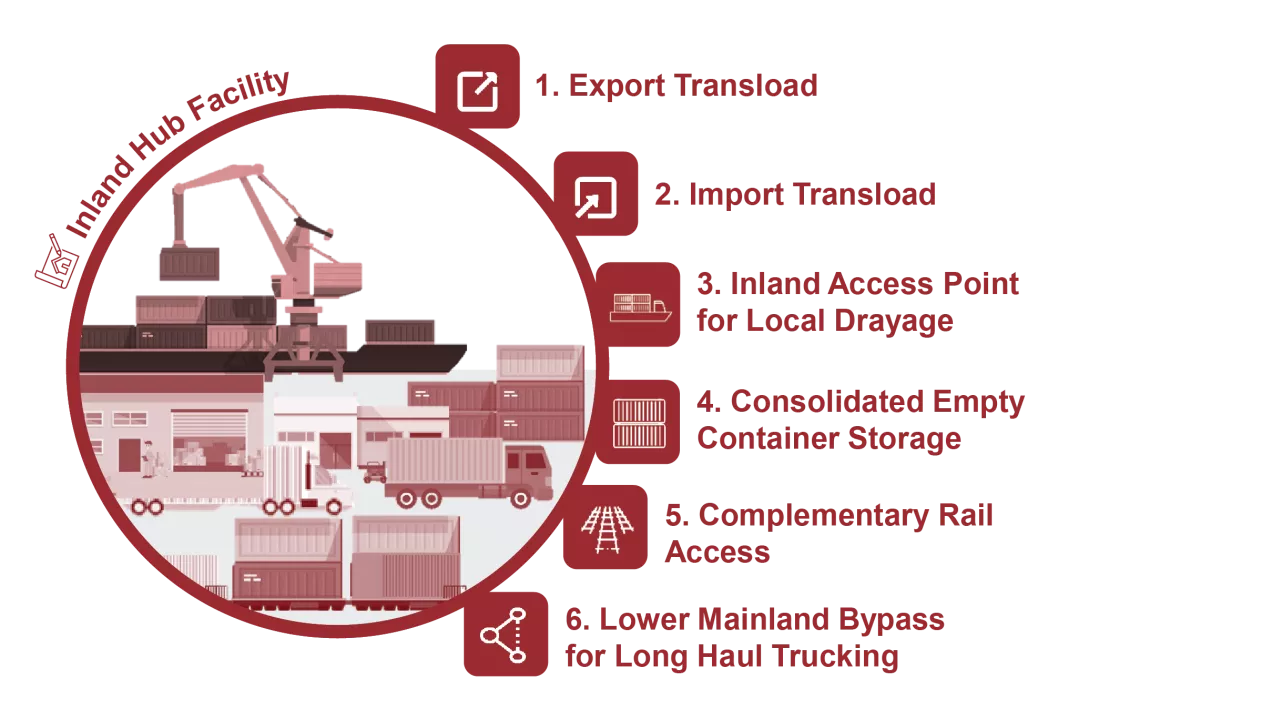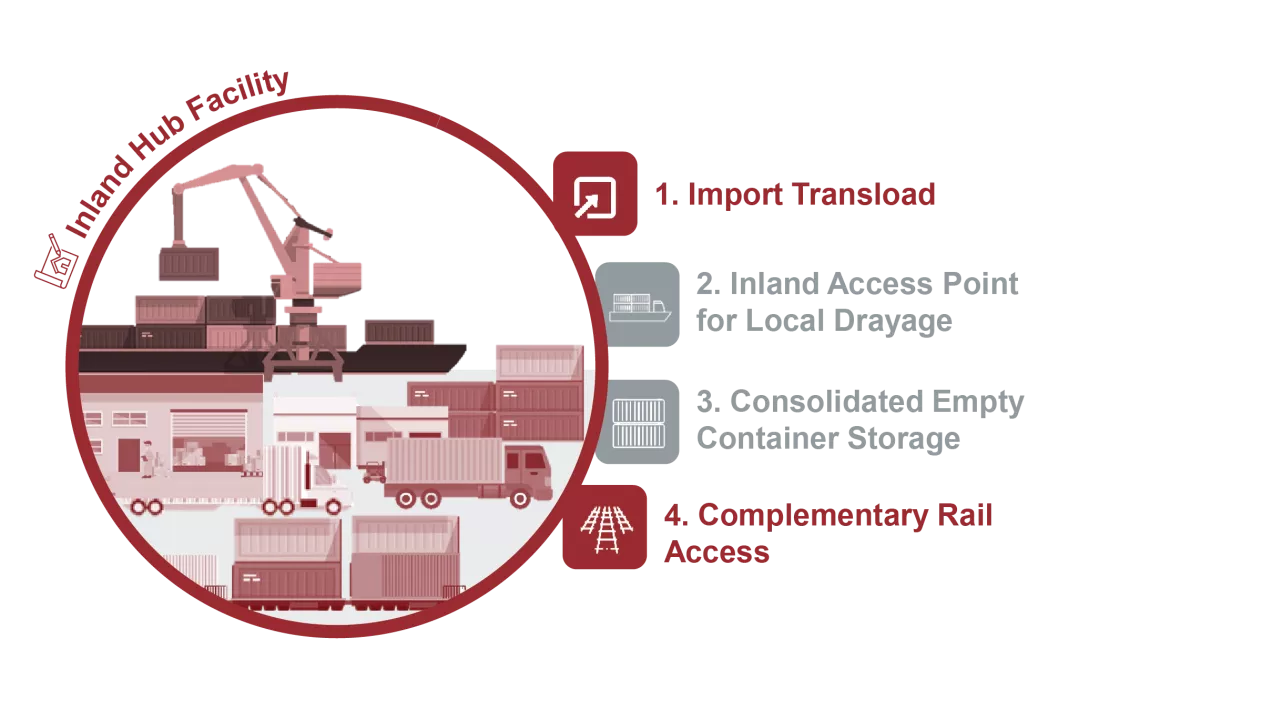
As part of our mandate to enable the safe and efficient movement of goods through the Port of Vancouver, we are taking steps to increase the sustainable movement of cargo in port waters.
We are working closely with industry to develop a short sea shipping concept at the Port of Vancouver. This would involve moving cargo on barges over relatively short distances within port waters and between deep-sea terminals and regional cargo handling facilities.
Contact:
shorteashipping@portvancouver.com
604.665.9004

About the project
Over the past 15 years, industry in the Vancouver gateway has been exploring a variety of short sea shipping options, primarily for containerized goods.
As seen in other North American regions, short sea shipping could provide opportunities to increase efficiency and reduce the environmental impacts of cargo movements in the region. Short sea shipping can be a cost-effective alternative for moving containers and other types of goods between deep-sea terminals and inland transload facilities where cargo is transferred from one mode of transport to another (e.g., from a shipping container to a truck).
Currently at the Port of Vancouver, non-bulk cargo and containers are mainly moved by truck to and from port terminals and regional cargo handling facilities. Short sea shipping would complement the use of trucks and provide a way for cargo to be moved on barges along waterways in and around the port.
Project benefits
Increasing regional cargo movement capacity and efficiency
Spurring local economic development opportunities and increasing gateway resilience
Enabling efficient use of existing and planned marine terminal infrastructure through reducing the need for on-site storage
Helping to decrease greenhouse gas emissions related to cargo movement
Advancing the development of a short sea shipping terminal
Building on engagement to date, we have been collaborating with DP World, who has been advising the port authority on an operating model and conceptual design for a short sea terminal located on port land in Richmond at the foot of No.8 Road. A potential compact inland hub facility at Area V would be well-positioned given its proximity to existing transload services, complementary container services, and the CN Ewen rail yard.
Short sea shipping study
In 2019, the port authority received federal funding from Transport Canada through the National Trade Corridors fund to study short sea shipping in the gateway. This study included engagement with over 50 industry and government members, Indigenous groups, as well as interviews conducted with other North American and European jurisdictions currently offering barging services, and additional research and operating model analysis.
The study:
- Explored potential operating models and possible locations for short sea shipping services
- Identified the types of goods that could be moved
- Identified the infrastructure and equipment required
Study findings
The findings from the study led to the transformative model of an Inland Hub Facility. An inland hub facility would provide a common user facility with some complementary container services on site, such as import and export transload facilities, empty container services, and rail loading/unloading infrastructure or proximity to railheads.
The model has two options, a comprehensive and a compact option, depending on land availability and funding.

Comprehensive option
Involves establishing a new container services cluster and barge service at or near an existing railhead in the Lower Mainland.
This inland hub facility would maximize efficiencies by having on-site import and export transload facilities, empty container services and supporting infrastructure to load directly to rail.
Establishing a facility of this complexity would be challenging as it requires assembly of a large parcel of land (larger than 60 acres) with access to the Fraser River as well as connectivity to existing road and rail infrastructure. This option, however, has the potential to be the most transformative as it would reduce the number of touches and number of vehicle kilometres required to move containers through the Vancouver Gateway.

Compact option
Involves establishing a barging facility at an existing container services cluster.
This inland hub facility would have minimal on-site container storage and staging, and as such, could require a short (less than 5 km) truck trip between the short sea shipping facility and nearby container services.
This inland hub facility may be less complex to implement as it requires a smaller parcel of land (30 to 40 acres) and a proportionally smaller capital investment while still offering significant benefits to the Vancouver Gateway.
Despite the complexities of establishing a consistent short sea shipping service between Vancouver’s deep-sea terminals and a common user facility located on the Fraser River, the port authority is optimistic that short sea shipping will grow in the Vancouver gateway and complement the existing transportation of containers.
